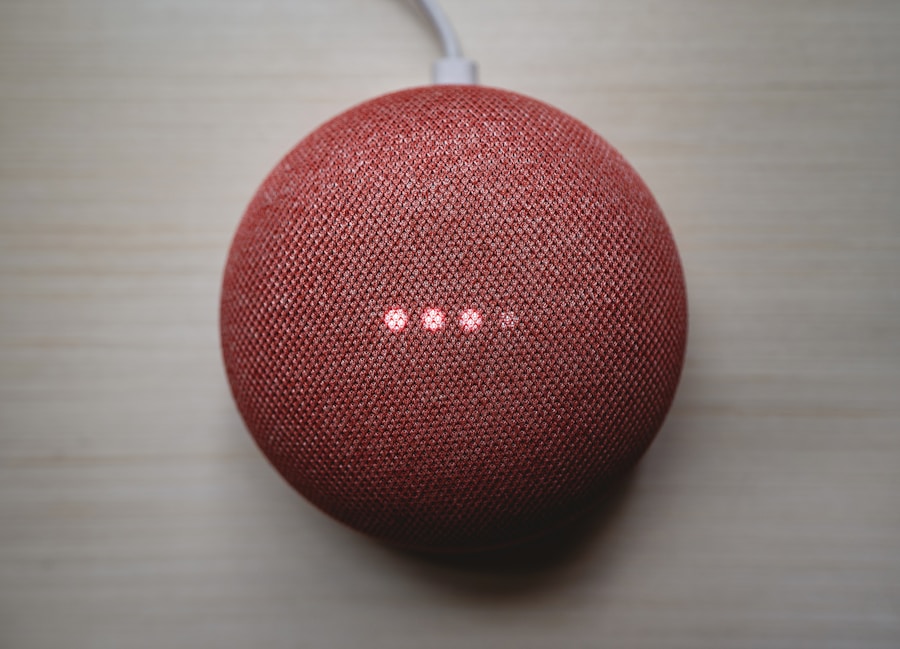Dictation software has emerged as a transformative tool in the realm of personal and professional productivity. This technology, which allows users to convert spoken words into written text, has evolved significantly over the years. Initially, dictation software was primarily used in specialized fields such as medical transcription and legal documentation.
However, with advancements in artificial intelligence and natural language processing, dictation software has become accessible to a broader audience, including students, writers, and business professionals. The convenience of speaking rather than typing has made it an attractive option for those looking to enhance their efficiency and streamline their workflows. The rise of dictation software can be attributed to several factors, including the increasing prevalence of mobile devices and the growing demand for hands-free technology.
As people juggle multiple tasks in their daily lives, the ability to dictate notes, emails, and documents while on the go has become invaluable. Furthermore, the integration of voice recognition technology into various applications has made dictation software more user-friendly and accurate. This article delves into the myriad benefits of using dictation software, how to select the right tool for your needs, and tips for maximizing its effectiveness in your daily routine.
Key Takeaways
- Dictation software allows users to convert spoken words into text, making it a valuable tool for increasing productivity and accessibility.
- Using dictation software can improve efficiency, accuracy, and ergonomics, while also reducing the risk of repetitive strain injuries.
- When choosing dictation software, consider factors such as compatibility, accuracy, language support, and integration with other tools.
- To use dictation software effectively, speak clearly, use punctuation commands, and proofread the transcribed text for accuracy.
- Integrating dictation software into your workflow can streamline tasks such as note-taking, writing, and data entry, saving time and effort.
Benefits of Using Dictation Software
Increased Speed and Efficiency
By allowing users to speak their thoughts instead of typing them out, dictation software can significantly reduce the time spent on writing tasks. A study conducted by the University of Utah found that individuals who used voice recognition software could produce text at a rate of up to 160 words per minute, compared to an average typing speed of 40 words per minute. This increase in speed can be particularly beneficial for professionals who need to generate reports, emails, or other documents quickly.
Improved Accessibility
In addition to boosting productivity, dictation software can also improve accessibility for individuals with disabilities or those who struggle with traditional typing methods. For example, people with conditions such as carpal tunnel syndrome or arthritis may find it challenging to type for extended periods. Dictation software provides an alternative that allows them to communicate effectively without physical strain.
Fostering Inclusivity and Empowerment
Moreover, this technology can assist non-native speakers who may find it easier to articulate their thoughts verbally rather than writing them down in a second language. By breaking down barriers to communication, dictation software fosters inclusivity and empowers users to express themselves more freely.
How to Choose the Right Dictation Software

Selecting the appropriate dictation software requires careful consideration of various factors tailored to individual needs and preferences. One of the first aspects to evaluate is the accuracy of the voice recognition technology. Different software solutions utilize varying algorithms and machine learning models, which can impact how well they understand different accents, dialects, and speech patterns.
It is advisable to look for software that offers a trial period or demo version, allowing users to test its performance before committing to a purchase. Another critical factor is compatibility with existing devices and applications. Many dictation software options are designed to work seamlessly with popular operating systems such as Windows and macOS, as well as mobile platforms like iOS and Android.
Additionally, some programs integrate directly with word processors or email clients, enabling users to dictate text directly into their preferred applications. Evaluating these compatibility features ensures that the chosen software will fit smoothly into your existing workflow without requiring significant adjustments or additional training.
Tips for Using Dictation Software Effectively
| Tip | Description |
|---|---|
| Speak Clearly | Ensure that you speak clearly and enunciate your words to improve accuracy. |
| Use Punctuation Commands | Learn and use punctuation commands such as “comma” or “period” to punctuate your text accurately. |
| Proofread and Edit | Always proofread and edit your transcribed text to correct any errors or misunderstandings. |
| Train the Software | Take the time to train the dictation software to recognize your voice and speech patterns for better accuracy. |
| Use a Quality Microphone | Invest in a quality microphone to improve the accuracy and clarity of your dictation. |
To maximize the benefits of dictation software, users should adopt specific strategies that enhance their experience and improve accuracy. One essential tip is to speak clearly and at a moderate pace. While modern voice recognition systems are designed to understand natural speech patterns, enunciating words distinctly can help minimize errors in transcription.
Users should also be mindful of background noise; a quiet environment can significantly improve the software’s ability to accurately capture spoken words. Another effective practice is to familiarize oneself with the software’s commands and features. Many dictation programs offer voice commands for punctuation, formatting, and navigation within documents.
Learning these commands can streamline the dictation process and reduce the need for manual editing later on. Additionally, users should consider creating a personalized vocabulary list within the software if it allows for customization. This feature can enhance accuracy by teaching the program specific terms or phrases relevant to the user’s field or interests.
Integrating Dictation Software into Your Workflow
Incorporating dictation software into your daily routine can lead to significant improvements in efficiency and organization. One effective approach is to designate specific times during the day for dictation tasks. For instance, setting aside time in the morning for brainstorming ideas or drafting emails can help establish a consistent routine that leverages the strengths of voice recognition technology.
By creating a structured schedule, users can ensure that they allocate sufficient time for both dictation and subsequent editing or review. Moreover, integrating dictation software with other productivity tools can further enhance its effectiveness. For example, many users find success by combining dictation with task management applications or calendar tools.
By dictating reminders or notes directly into these applications, individuals can maintain better organization and ensure that important tasks are not overlooked. Additionally, using cloud-based storage solutions allows users to access their dictated documents from multiple devices, facilitating seamless transitions between work environments.
Overcoming Challenges with Dictation Software

Accurate Recognition of Technical Terms
One common issue is the inability to accurately recognize certain words or phrases, particularly those that are technical or industry-specific. To address this challenge, users can invest time in training the software by providing it with examples of their speech patterns and vocabulary. Many programs allow users to correct errors during transcription, which helps improve future accuracy as the software learns from these corrections.
Adapting to a New Way of Composing Text
Another challenge is adapting to a new way of composing text. For individuals accustomed to traditional typing methods, transitioning to dictation may feel awkward at first. It is essential for users to practice regularly and develop a comfortable rhythm when speaking their thoughts aloud.
Building Confidence and Fluency
Engaging in exercises that involve reading aloud or practicing dictation in a low-pressure environment can help build confidence and fluency over time. As users become more accustomed to this method of writing, they will likely find it easier to express their ideas verbally.
Advanced Features and Customization Options
Modern dictation software often comes equipped with advanced features that enhance its functionality beyond basic transcription capabilities. One notable feature is real-time collaboration tools that allow multiple users to work on a document simultaneously while utilizing dictation technology. This capability is particularly beneficial for teams working remotely or across different locations, as it fosters seamless communication and collaboration.
Customization options also play a crucial role in tailoring dictation software to individual preferences. Many programs allow users to create custom voice commands or shortcuts for frequently used phrases or formatting styles. This level of personalization not only improves efficiency but also enhances user satisfaction by making the software more intuitive and aligned with individual workflows.
Additionally, some advanced dictation tools offer integration with artificial intelligence-driven assistants that can help manage tasks beyond simple transcription, such as scheduling meetings or sending reminders based on dictated notes.
Future Trends in Dictation Software
The future of dictation software is poised for exciting developments driven by advancements in artificial intelligence and machine learning technologies. As these technologies continue to evolve, we can expect significant improvements in voice recognition accuracy and contextual understanding. This means that future iterations of dictation software will likely be able to comprehend complex sentences and nuances in speech more effectively than ever before.
Moreover, the integration of natural language processing will enable dictation software to provide more sophisticated features such as sentiment analysis and tone detection. These capabilities could allow users not only to transcribe their words but also to receive feedback on how their messages might be perceived by others based on tone and emotional context. Additionally, as voice-activated devices become increasingly prevalent in homes and workplaces, we may see greater interoperability between dictation software and smart home technologies, further enhancing user convenience and accessibility.
As we look ahead, it is clear that dictation software will continue to evolve alongside technological advancements, offering users even more powerful tools for communication and productivity in an increasingly fast-paced world.










Leave a Reply